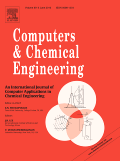 Authors: Michele CORBETTA, Flavio MANENTI, Carlo PIROLA, Mark V. TSODIKOV, Andrey V. CHISTYAKOV
Authors: Michele CORBETTA, Flavio MANENTI, Carlo PIROLA, Mark V. TSODIKOV, Andrey V. CHISTYAKOV
Affiliations: Politecnico di Milano, Dipartimento di Chimica, Materiali e Ingegneria Chimica “Giulio Natta”, Piazza Leonardo da Vinci, 32, 20133 Milano, Italy and Università degli Studi di Milano, Dipartimento di Chimica, Via Golgi, 19, 20133 Milano, Italy and A.V. Topchiev Institute of Petrochemical Synthesis, Leninskiy prospect, 29, Moscow 119991, Russian Federation
Reference: Computers and Chemical Engineering, vol. 71 (2014), pp. 457–466
Abstract: “This paper addresses the techno-economic analysis of the propane aromatization process, by adoptinga novel kinetics-to-process approach. The recent interest in this technological route derives from thedevelopment of new third generation biorefinery concepts, in which, algal oil is subjected to catalytichydrodeoxygenation processes for the production of (Hydrotreated Renewable Jet) HRJ fuels…”
DOI: 10.1016/j.compchemeng.2014.10.001
Comments: the authors choose Microsoft Excel against CAPE-OPEN. Along their paper, they are making explicit reference to CAPE-OPEN concepts like Process Modelling Environment and Process Modelling Component. Mentioning that “the CAPE-OPEN standard has been widely adopted and integrated within PMEs”, they cite its application to the modelling of thermodynamic properties and new unit operations.Their argument in favor of Microsoft Excel is that “the advantage of this approach derives from its easiness and usability.”. Also “home-made codes developed by engineers during R&D activities (e.g. regression of kinetic and thermodynamic models) could be directly embedded within process simulators without the need for further modifications. Moreover, the use of the excel unit operation module allows directly post-processing and reporting simulation results in tables and graphs.” These reasons are indeed valid. However the authors forget that a CAPE-OPEN Unit Operation may be developed in Microsoft Excel allowing then for that Unit Operation to be pluggable in any PME rather than just in one, here PRO/II. The authors are not so much using Microsoft Excel as a modeller but as a middleware between an executable written in C++ and the PME. Would be worth figuring out if the COBIA approach developed by CO-LaN and leading to a stub code generator for C++ among other programming language, would be an alternative to the use of Microsoft Excel as a middleware.
CAPE-OPEN related paper cited in text:
- Morales-Rodríguez R, Gani R, Déchelotte S, Vacher A, Baudouin O. Use of CAPE-OPEN standards in the interoperability between modelling tools (MoT) and process simulators (Simulis®Thermodynamics and ProSimPlus). Chem. Eng. Res. Des., 2008, 86(7), pp. 823–833.
